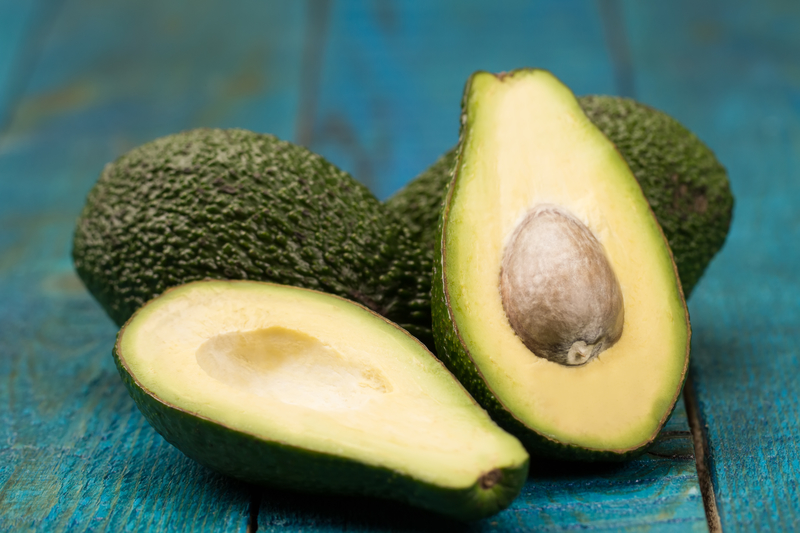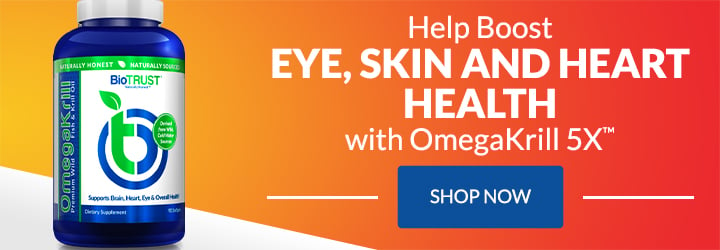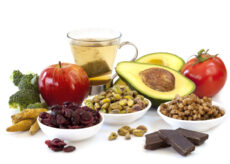The 5 Best Keto Foods (High-Fat & Low-Carb)

Like any diet, the ketogenic diet is not about a specific food; it’s about your entire body of work. Now, if you know anything about going keto (and the typical keto foods), you know it’s a very-low-carbohydrate, high-fat, moderate-protein diet.
Given the constraints, I’ll give you three guesses as to what types of foods are BEST. If you guessed fat, fat, and more fat, then you’d be right on point. And while protein-rich foods are also a staple, it’s not a high-protein diet. In fact, too much protein can keep you from getting into or staying in ketosis.
While there’s really no such thing as a “ketogenic” food, here are the top 5 you’re most likely to find if you decide to go keto!
The Top 5 Keto Foods

Coconut Oil
One of the best keto foods is coconut oil (along with shredded coconut, coconut milk, coconut flour, and other coconut-based foods). See, about 70% of the fat found in coconut oil is a very special type called medium chain triglycerides (MCTs for short).
MCTs are pretty awesome. They’re easily absorbed, metabolized, burned for energy, and the body has a hard time storing them as fat. But that’s not all—MCTs are readily converted into ketone bodies. Perhaps that’s why they’ve been shown to suppress appetite, boost metabolism, lower body weight, reduce belly fat, improve insulin sensitivity, and improve markers of metabolic health.1–6 Winning!

Avocados
With right around 80% of calories from fat, avocados are another one of the near-perfect keto foods. Plus, they’re incredibly versatile and downright tasty!
Avocados are also nutrient-dense, containing 6 grams of fiber and upwards of 20 essential nutrients. They’re a great source of potassium, which is an important mineral to consume on the ketogenic diet. In fact, active people should take in about 2 – 3 grams of potassium per day.7 One-half an avocado gets you almost 25% of the way there, providing just under 500 mg.

Butter, Ghee, Heavy Cream, Sour Cream, and Full-Fat Cheese
Full-fat dairy is high in fat and low in carbs, making it keto-friendly. You may be thinking, “What about the saturated fat?” Give me your hand, so I can pull you out of that deep, archaic rut. It’s now well-established and widely accepted that saturated fat is not associated with heart-related issues and other adverse health outcomes.8
Want to know something even more interesting? More and more studies are showing full-fat dairy is related to less belly fat and better blood pressure, cholesterol, triglycerides, and glycemic control. And these better health outcomes are actually thought to be brought on by the saturated fats found in dairy.9
Also, dairy fat is a natural source of MCTs.10 Even cooler, butter is the best dietary source of butyric acid (aka butyrate), which fuels our immune cells, stimulates the release of appetite-suppressing hormones, and even helps protect the brain.11
So, go ahead: add that cream to your coffee. Slather some butter onto your veggies. Just make sure you choose butter and cream from organic, pasture-raised cows, which contains significantly more healthy fats (i.e., omega-3s and CLA) compared to conventional dairy.

Fatty Fish
Cold-water fatty fish are the best dietary sources of the all-important omega-3 fatty acids DHA and EPA, well-known for supporting:
- Heart health15–17
- Brain health, cognitive function, and mood18–23
- Eye health and vision24–26
- Skin health27,28
- Immune function29
- Metabolic function and body composition30–32
- A healthy inflammatory response33
Recent research has shown DHA and EPA may also have anti-aging properties.34–36 Pretty cool stuff, right? According to health organizations like the American Heart Association, it’s a good idea to eat fatty fish at least twice a week.37
Here are some of the best cold-water fatty fish, which are high in omega-3s, low in mercury, and sustainably sourced:
- Anchovies
- Sardines
- Herring
- Salmon
- Mackerel

Eggs
Eggs have been touted as “nature’s perfect food,” “one of the healthiest foods on the planet,” and “nature’s multivitamin.” You can add to that list “one of a ketogenic dieter’s best friends” since eggs contain virtually zero carbs. What they do contain are healthy fats and a good source of high-quality protein.
Eggs also contain “bonus” nutrients like choline, lutein, and zeaxanthin, which have been referred to as “natural sunglasses” due to their ability to shield the eyes from potentially damaging UV rays. These nutrients boost brain health and cognitive function, eye health and vision, and heart health.
They have also been shown to boost the body’s production of brain-derived neurotrophic factor (BDNF), an important growth factor for the brain and central nervous system that plays a key role in cognitive function, mood, and mental health.12,13 All of this makes eggs a necessary addition to any list of the top keto foods.
Just like dairy, it’s best to choose eggs from pasture-raised hens, shown to have 2 ½ times more omega-3 fats compared to conventional eggs.14







